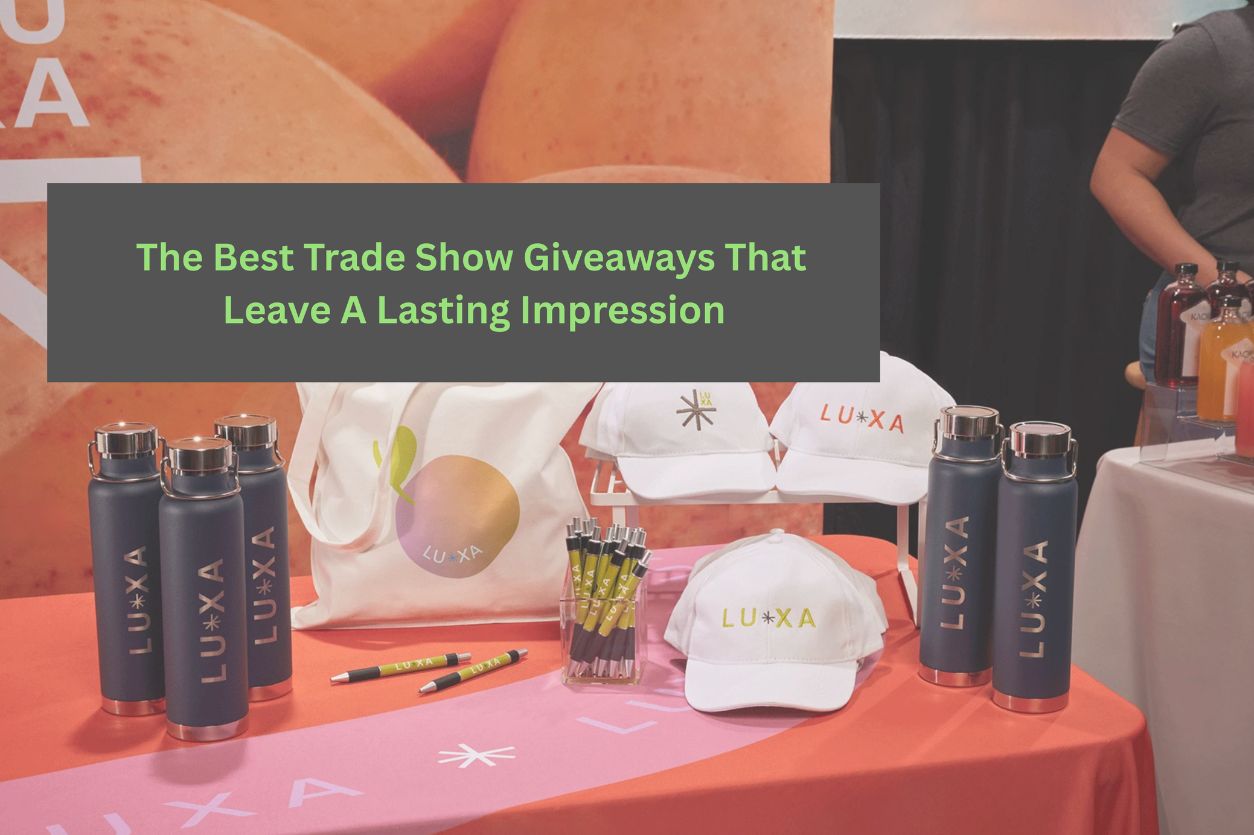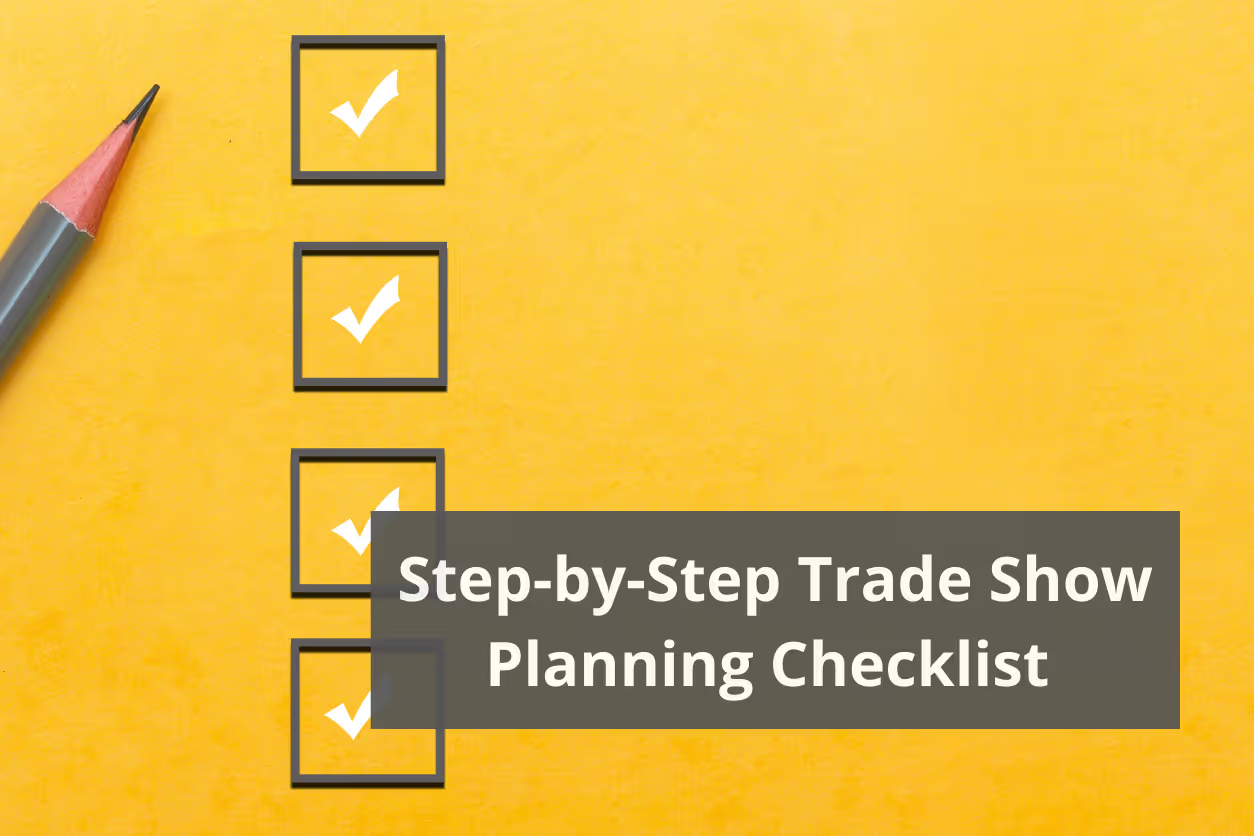In the trade show industry, the term “tension fabric graphic” or “stretch fabric graphic” is everywhere. If you’re new to trade shows or events or if you're just new to ordering displays, you may wonder what these terms actually mean in regards to your exhibit. In this post we’ll discuss what a tension fabric or stretch fabric graphic is, spoiler alert, they are the same thing. We will also discuss how designing for these graphics is different from traditional media and why tension graphics are so popular.
What is a tension fabric or stretch fabric graphic?
When you hear the term “tension fabric graphic” or “stretch fabric graphic” just know they are one in the same. From this point on we'll just refer to them as tension fabric graphics because that is the most common phrasing. A tension fabric graphic typically refers to a trade show display graphic made with a stretch polyester material. These graphics generally come in two styles.
1. “Pillowcase” Style
A “pillowcase” style graphic is a common term people use to describe a tension fabric graphic because it stretches over a display frame like a pillowcase would over a pillow. These graphics then zip shut on the bottom or side to give the display the needed tension to create the wrinkle free image. A good example of a pillowcase style graphic is the 10x10 Waveline Curved display kit.

2. Silicone Edge Graphic (SEG) Style
Silicone Edge Graphics are commonly referred to as just SEG graphics, and they are exactly as their name implies. These graphics typically have a ¼ inch to a ½ inch silicone edging on all sides of the graphic with splits in the silicone at all four corners. To install an SEG graphic, you roll and tuck the silicone edging into a channel running along the edge of the display frame. Once all four sides are installed, the tension on the material creates a very tight, wrinkle free graphic. For an example of this style display, see the Infinity Pro Backlit 10ft Trade Show Kit -10.01.


What should you or your graphic designer know about preparing for a fabric trade show display design vs traditional print?
Creating a large scale design for a trade show booth graphic can be a little tricky. There are a few key points to consider when designing for a tension fabric print using the dye-sublimation printing process. If you aren't familiar with dye-sublimation printing, take a look at our quick “What is Dye-Sublimation Printing” post.
1. Text
When designing a trade show display graphic, It’s vital to keep text within the “safe area”. While safe areas may seem a little narrow, this is to ensure that your text does not get distorted as it nears the frame, where the fabric will be tighter. This is one reason we also recommend limiting the overall text in your design. Including too much text in an exhibit can not only be overwhelming, it can waste valuable space.

2. Low Contrast Design
Low contrast designs are popular and they can give your branding an eye catching look and modern feel. While these can be a nice touch on most media options, they can present a problem on tension fabric graphics.
Since polyester is a synthetic fiber, the fabric has a slight sheen. This sheen can lighten the entire graphic causing a low-contrast, light-colored design to be less visible when printed. We completely understand the draw to a low contrast design but we recommend using high contrast images for best results.
3. Coated Pantone Colors
If you are using Pantones, select those that are in the “coated” family, as this most closely resembles how the color will print on a fabric. Often, designers will use the same “uncoated” colors that they use for printing paper marketing materials. These colors cannot be matched on the fabric, and you will need to find a similar color in the “coated” family.
We offer sample prints called “hard proofs” by request if necessary. See our "Pantones, CMYK, And More: What You Need To Know About Display Colors In Simple Terms" post for more details about Pantones or view the Coated and Uncoated Pantone Guide on the Pantone website.

4. Pixelation
A wonderful advantage of fabric printing is that it is more forgiving to pixelation than a traditional smooth surface. While it will not camouflage very low resolution images, if the image has a slight grain or pixelation, the texture of the fabric can work to your advantage. This is especially useful since most images need to be scaled up quite high to create an exhibit back wall.
Why are tension fabric graphics so popular?
1. Tension fabric graphics are less likely to get torn, creased, or wrinkled.
2. They are significantly easier to store and pack for travel.
3. Generally speaking, they can also be machine washed in case of any spills*
4. Being a stretch fabric allows you to have beautiful and well-fitted displays that can easily be updated each season simply by ordering a new graphic.
*Note: Never dry fabric graphics in a dryer using heat. Always air dry or low tumble dry if machine washing.
Creating a design for a tension fabric trade show booth has several unique challenges when compared to creating designs for literature, apparel, promotional products, etc. To make this process as simple as possible, our team reviews every piece of artwork prior to print to make sure each of these points are well executed. Our artwork review comes at no additional cost as it’s simply part of our standard pre-print process.
If you’re uncomfortable designing your own display artwork, MODdisplays has an in-house design team that offers custom design services for a flat fee of $100 which also includes a free 3D rendering for your entire project. That means if you have one 10x10 display or a 20x20 trade show booth that has multiple displays, you still only pay the $250 flat fee.
No matter what level of help or guidance you may need to create your ideal trade show display, our team makes the process simple and ensures you’re happy with the end result. Please feel free to call us at 877.663.3976, email us at info@moddisplays.com, or schedule a meeting to talk with our team about your ideas.






.jpg)

.png)

.avif)






